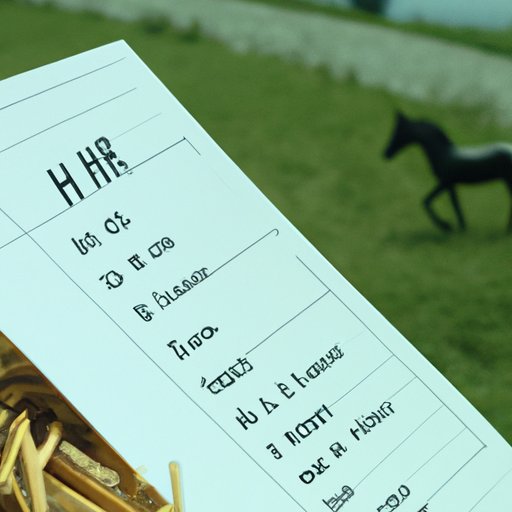Introduction
An IRA is a tax-advantaged retirement account that allows you to save money on a pre-tax basis. This means that the money you contribute to your IRA is not subject to taxes until you withdraw it in retirement. IRAs also offer other benefits such as tax-deferred growth potential and potential tax deductions.
In this article, we’ll discuss the current contribution limits for IRAs, the different types of IRAs and their respective contribution limits, and strategies to maximize your contributions. We’ll also provide some tips for budgeting to help you reach your IRA goals.

Calculating How Much You Can Contribute to Your IRA
The amount you can contribute to your IRA is determined by the Internal Revenue Service (IRS). The current contribution limit is $6,000 per year, or $7,000 if you’re age 50 or older. However, there are certain income limits that may affect how much you can contribute.
If your modified adjusted gross income (MAGI) falls within certain ranges, you may be eligible for a reduced contribution limit or even a complete exclusion from contributing to an IRA. For example, if your MAGI is above $75,000 for single filers or $125,000 for joint filers, you are not eligible to make a deductible contribution to a traditional IRA.

Understanding the Different Types of IRAs and Their Respective Contribution Limits
There are several different types of IRAs, each with its own contribution limits. These include traditional IRAs, Roth IRAs, SEP IRAs, SIMPLE IRAs, and Education IRAs.
Traditional IRAs allow you to make contributions with pre-tax dollars, which are then taxed when you withdraw them in retirement. The current contribution limit for a traditional IRA is $6,000 per year, or $7,000 if you’re age 50 or older.
Roth IRAs allow you to make contributions with after-tax dollars, which grow tax-free and can be withdrawn tax-free in retirement. The current contribution limit for a Roth IRA is $6,000 per year, or $7,000 if you’re age 50 or older.
SEP IRAs are employer-sponsored plans that allow self-employed individuals and small business owners to contribute up to 25% of their net profits, up to a maximum of $58,000 per year.
SIMPLE IRAs are employer-sponsored plans that allow employers to match employee contributions up to 3% of their salary, with a maximum contribution of $13,500 per year.
Education IRAs allow parents to save up to $2,000 per year for a child’s education expenses.
Exploring Strategies to Maximize Your Contributions
One of the best ways to maximize your contributions to your IRA is to start early. The earlier you begin saving, the more time your money has to grow and compound. Additionally, by starting early, you can take advantage of the power of compounding interest and tax-deferred growth.
Another way to maximize your contributions is to contribute regularly. Make sure to set up a regular monthly or bi-weekly contribution schedule so that you can stay on track with your IRA goals.
Finally, consider increasing your contributions when possible. If you receive a bonus at work or a tax refund, consider using it to boost your IRA contributions.

Maximizing Your IRA Contributions with Smart Planning
In order to maximize your contributions to your IRA, it’s important to have a plan in place. Start by establishing a budget that supports your IRA goals. By creating a budget, you’ll be able to track your spending and make adjustments where needed in order to reach your goals.
When creating your budget, make sure to factor in any other sources of income such as bonuses or tax refunds. You can then use these sources to boost your IRA contributions.
Additionally, consider setting up automatic transfers from your checking account to your IRA account. This will ensure that your contributions are made on time and that you don’t miss out on any potential growth.
Conclusion
Contributing to an IRA is one of the best ways to save for retirement. By understanding the current contribution limits and exploring strategies to maximize your contributions, you can make the most of your IRA.
Creating a budget to support your IRA goals is essential. Additionally, consider setting up automatic transfers from your checking account to your IRA account and boosting your contributions when possible. By taking these steps, you can ensure that you are maximizing your contributions and reaching your retirement goals.


